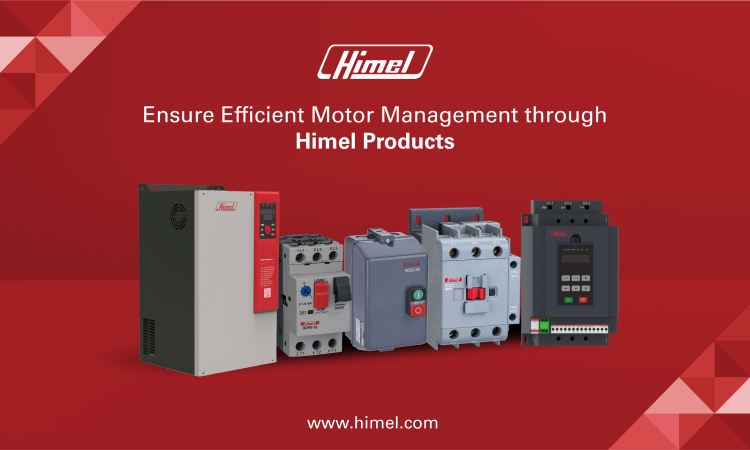Motor Management

Ensure Efficient Motor Management through Himel Products
Our daily lives and workplaces need electric motors to run fans, blowers, power tools, compressors and more. Motors are crucial to operating various appliances, machines, and equipment across different sectors. Extended downtime leading to high maintenance cost in the event of a breakdown in this vital piece of gear is devastating for any application. This is where motor management comes in the picture.
Motor management involves much more than just routine maintenance; it includes ensuring efficient power management and distribution among various motors. The framework addresses various electrical, mechanical, and maintenance issues for end users, designers, and equipment manufacturers.
When electric motors are being used, several deviations from the typical pattern may occur for a variety of reasons. Overloads, short circuits, and voltage drop or disappearance are the most common reasons of aberrant motor speeds.
The type of protection mechanism used is governed by the power, the type and use of the motor, the starting conditions, and the nature of the overload. Determining which aspects of a motor protection and control system will be most useful in each setting can be tricky. Here are the most used motor management products, that are used in almost all motor-based applications and equipment.
Contactors and Thermal Overload Relays
Electric motors and lighting systems are two of the most usual places to find a contactor in use, although they can be installed in any device that requires regular on/off operations. They are incredibly adaptable devices that may be used for anything from simple light switches to complicated applications like controlling electromagnets. They also come in a wide range of sizes—from those that can be held in one hand to those that are a yard or more in length.
The fundamental distinction between contactors and thermal overload relays is the load they are designed to manage. Contactors are often developed for and used in three-phase applications and have a larger current carrying capacity. Thermal relays are often employed in single-phase applications for low-current or low-voltage switching.
Motor Circuit Breaker
A motor circuit breaker not only protects electric lines and load devices from short-circuit accidents, but also makes motor circuit combinations easier. It has numerous capabilities that allow it to provide safe electrical supply to motors and protection against electrical defects such as short circuits, motor overload, phase unbalances and phase loss.
The selection of a motor circuit breaker is crucial to the effective protection of motors and the installation. The proper circuit breaker can prevent catastrophic fires, interruptions in facility productivity, and the cost of replacing motors that would otherwise need just routine maintenance.
Magnetic Starters
Motor starters are specialized electrical devices that are designed to handle the high electrical current that motors draw when they are started from a standstill while also protecting the motors from the extreme heat of overloads during normal operation. They often include two to four sets of main contact points, as well as built-in auxiliary connections and thermal overload cut-outs.
Electromagnets are used to power magnetic starters. They have an overload relay and an electromagnetically driven set of contacts that start and stop the attached motor load.
Variable Speed Drive
A variable speed drive's primary purpose is to regulate the quantity of power sent by the grid to the application. Located between the power source and the motor, variable speed drives regulate the flow of electricity. The electrical supply feeds electricity into a drive, which then controls the amount of power delivered to the motor.
If the torque or speed is too high or too low, mechanical controls will be used to slow down shifts or control output. The end effect is inefficiency, with a great deal of resources and effort going to waste. The tempo of the motor should correspond precisely with the needs of the procedure. As a result of the lack of a more efficient method of regulating speed, a great deal of power is lost, which is bad for business.
Soft Starter
To reach top speed rapidly, motors often need a lot of power. You may safeguard your expensive machinery from damage caused by high inrush currents and torque spikes by using a soft starter or a variable frequency drive. This will also help your motor last longer by reducing the wear and tear that comes from excessive heat.
Soft starters are devices that momentarily lower the input voltage or current by lowering the torque. To regulate the current flow, some soft starters may employ solid-state electronics. They can regulate anything from one to three stages, with the latter usually yielding the best results.
Himel's product line offers superior dependability along with a lengthy mechanical and electrical lifespan. For more information, explore Himel’s motor management products today.
